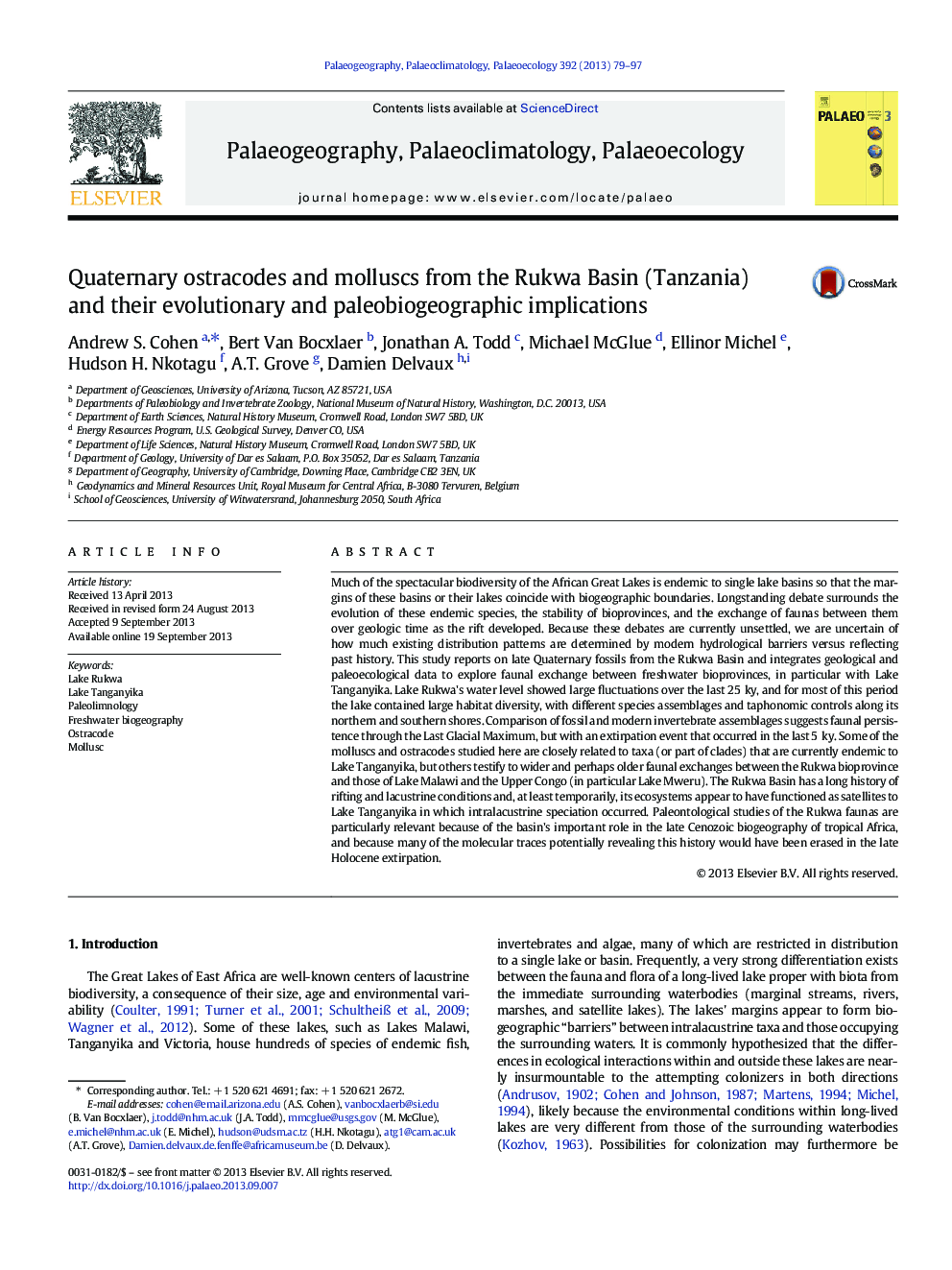| کد مقاله | کد نشریه | سال انتشار | مقاله انگلیسی | نسخه تمام متن |
|---|---|---|---|---|
| 4466430 | 1622198 | 2013 | 19 صفحه PDF | دانلود رایگان |

• The Rukwa Basin holds a rich fossil Quaternary fauna of ostracodes and molluscs.
• Intrabasinal evolution appears to have occurred in late Quaternary Paleolake Rukwa.
• Several fossil species from Rukwa are closely related to Tanganyikan endemics.
• Fossils indicate the interconnectivity of the Rukwa bioprovince to several others.
• Rukwa's age & location make it of great interest for African freshwater biogeography.
Much of the spectacular biodiversity of the African Great Lakes is endemic to single lake basins so that the margins of these basins or their lakes coincide with biogeographic boundaries. Longstanding debate surrounds the evolution of these endemic species, the stability of bioprovinces, and the exchange of faunas between them over geologic time as the rift developed. Because these debates are currently unsettled, we are uncertain of how much existing distribution patterns are determined by modern hydrological barriers versus reflecting past history. This study reports on late Quaternary fossils from the Rukwa Basin and integrates geological and paleoecological data to explore faunal exchange between freshwater bioprovinces, in particular with Lake Tanganyika. Lake Rukwa's water level showed large fluctuations over the last 25 ky, and for most of this period the lake contained large habitat diversity, with different species assemblages and taphonomic controls along its northern and southern shores. Comparison of fossil and modern invertebrate assemblages suggests faunal persistence through the Last Glacial Maximum, but with an extirpation event that occurred in the last 5 ky. Some of the molluscs and ostracodes studied here are closely related to taxa (or part of clades) that are currently endemic to Lake Tanganyika, but others testify to wider and perhaps older faunal exchanges between the Rukwa bioprovince and those of Lake Malawi and the Upper Congo (in particular Lake Mweru). The Rukwa Basin has a long history of rifting and lacustrine conditions and, at least temporarily, its ecosystems appear to have functioned as satellites to Lake Tanganyika in which intralacustrine speciation occurred. Paleontological studies of the Rukwa faunas are particularly relevant because of the basin's important role in the late Cenozoic biogeography of tropical Africa, and because many of the molecular traces potentially revealing this history would have been erased in the late Holocene extirpation.
Journal: Palaeogeography, Palaeoclimatology, Palaeoecology - Volume 392, 15 December 2013, Pages 79–97